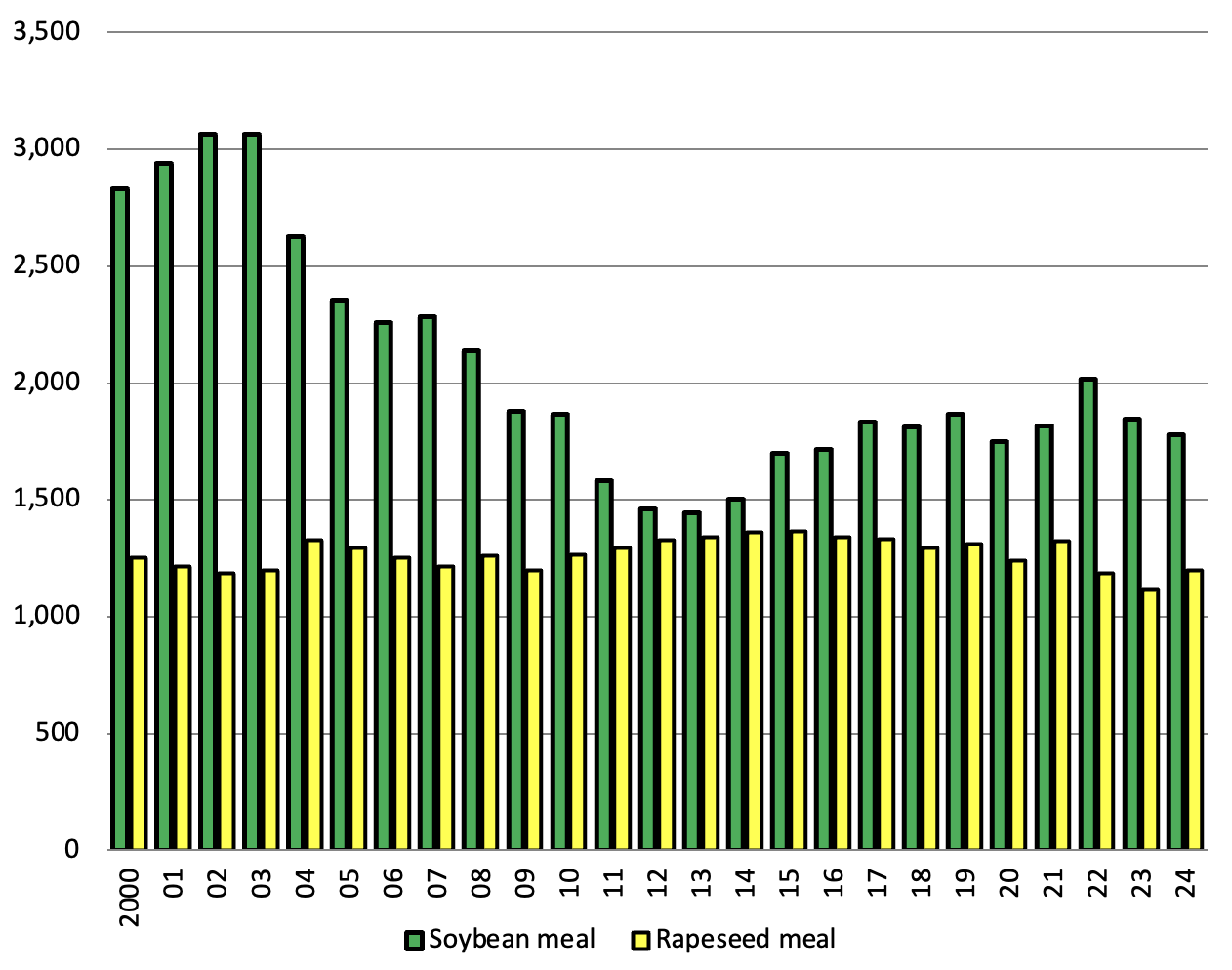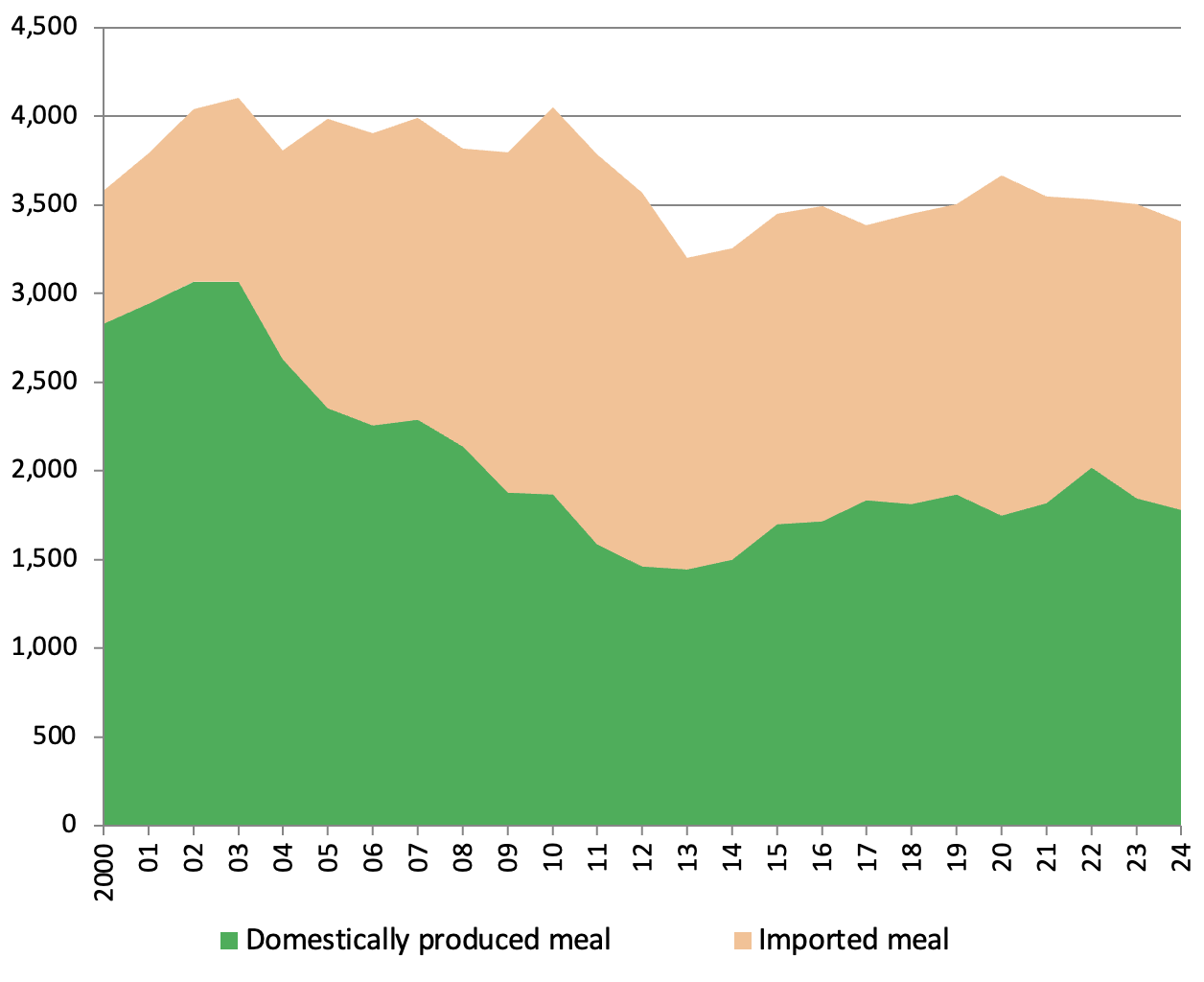Generally speaking, the oil-manufacturing is viewed as an industry for the production of oil. Although this is indeed true, the oilcake (meal) generated when oil is expressed from plants is good product with a wide range of uses. In particular, soybean meal contains high-quality protein and is used extensively, with a focus on animal feed. Internationally, the expression industry is mainly referred to as "crusher." This name originates from how oilseeds are crushed in order to manufacture the substances of oil and meal. In particular, the oil content of soybeans is only about 20% and the majority of the generated product is meal. Therefore, although soybean oil expression considers compatibility with meal demand, since there is also a need to meet oil demand, domestic producers maintain awareness of both oil and meal demand and conduct their operations accordingly.
Currently, meal generated in large amounts in Japan is soybean meal and rapeseed meal. This section introduces these two types of meal.
The production amount of meal is about 75-77% of the total weight for soybeans and about 54-56% for rapeseeds. Figure 24 shows the production amount for soybean meal and rapeseed meal. Of course, the meal production amount fluctuates in proportion to the amount of oil expressed from soybeans and rapeseed.
Figure 24: Changes in the production amount for soybean and rapeseed meal in Japan
(Unit: 1,000 tons)

Source: Survey on Oil Production Results (MAFF)
There is high demand for soybean meal. This demand cannot be satisfied from only the domestically-produced amount. Therefore, Japan imports a large amount of soybean meal. From 2009, the amount of soybean meal imported has exceeded the amount produced in Japan. From 2017, the amount produced in Japan once again exceeded the amount imported. However, in 2020, demand for soybean oil decreased due in part to the COVID-19 pandemic, thus causing the expression amount to decrease and the amount of imported soybean meal to exceed the amount produced in Japan. In 2021 and 2022, soybean oil expression showed signs of recovery and domestic production increased, reaching 57% of the total expression amount. In 2023, demand for soybean oil decreased due to the impact of price increases. This caused the amount of oil expression to decrease and the ratio of domestic production to fall to 53%. The same conditions continued in 2024 and the ratio fell to 52%.
Figure 25: Changes in the soybean meal supply amount in Japan
(Unit: 1,000 tons)

Source: Survey on Oil Production Results (MAFF), Trade Statistics (MOF)
It is not possible to accurately ascertain the usage of soybean meal. However, because soybean meal contains quality protein of 40% or higher, it is second only to corn for being used in large amounts as an ingredient in blended feed for animal livestock. The rate of usage in blended feed has remained around 12% of the total production amount of blended feed, although the exact percentage varies depending on the price of meal. Following the rise in international soybean prices in 2008, soybean meal has generally been viewed as expensive and the rate of use in blended feed decreased. Nevertheless, the rate once again returned to a range from 12% to less than 14% in recent years. In addition to animal feed, soybean meal is also used in vegetable protein products and in brewed products (miso, soy sauce, etc.). Furthermore, after passing through fermentation and decomposition processes, it is also widely used as seasoning and as a bulking agent for dairy products.
Animal feed is also the most common usage for rapeseed meal. Other uses include organic fertilizer.
In this way, by separating the raw material of oilseeds into oil and meal, the oil-manufacturing industry can be described as an industry that harnesses the potential of plants without waste.





